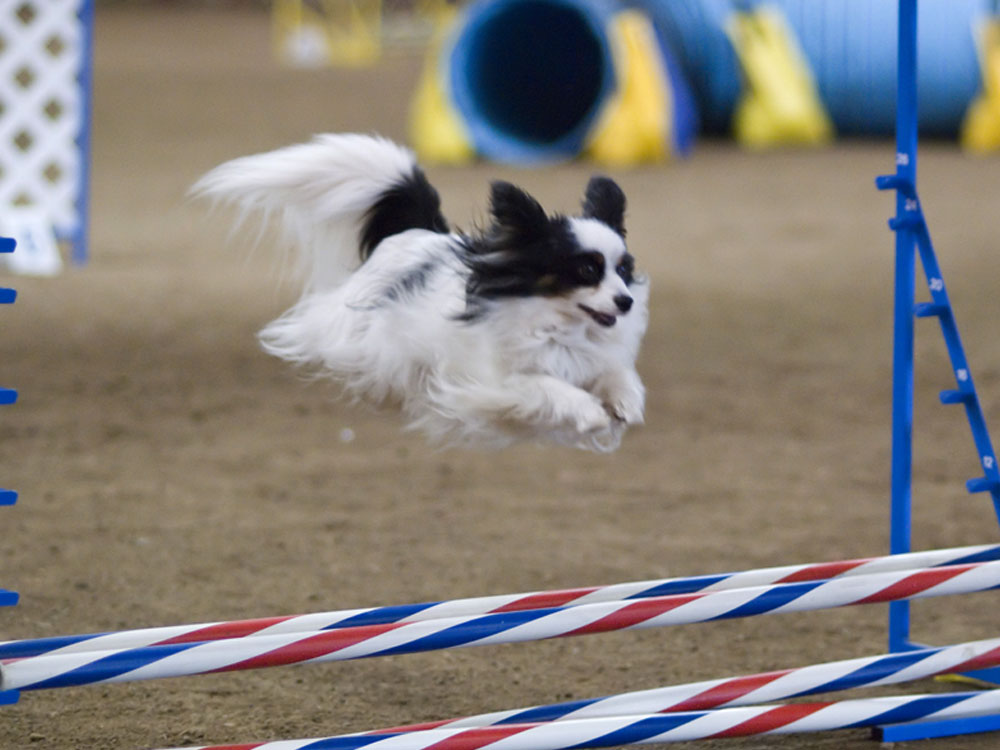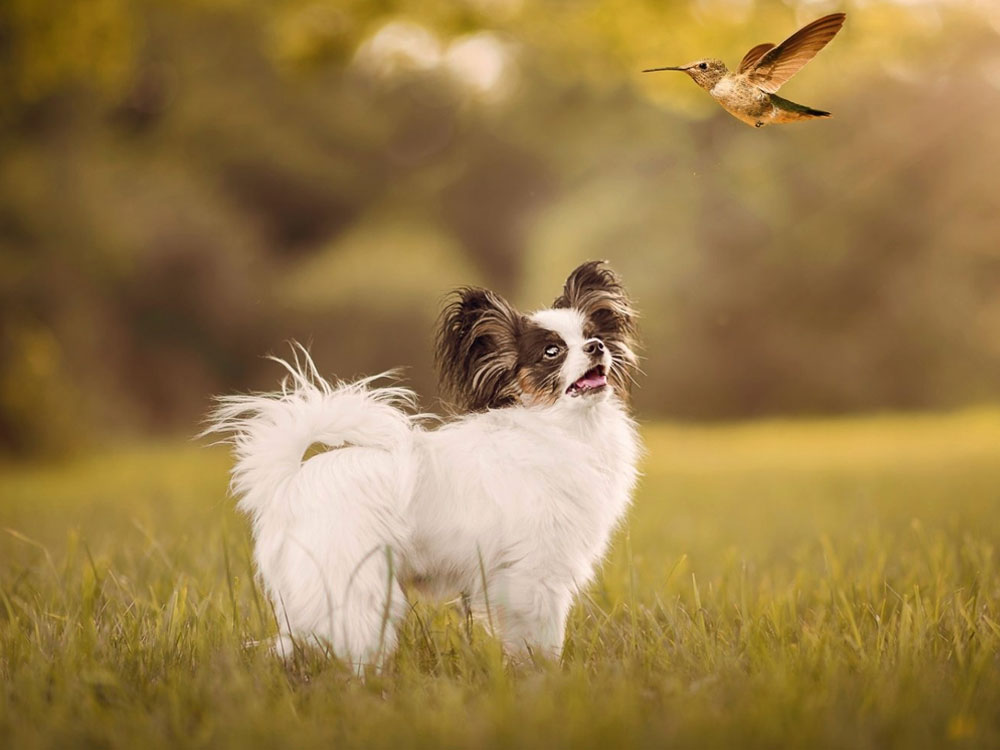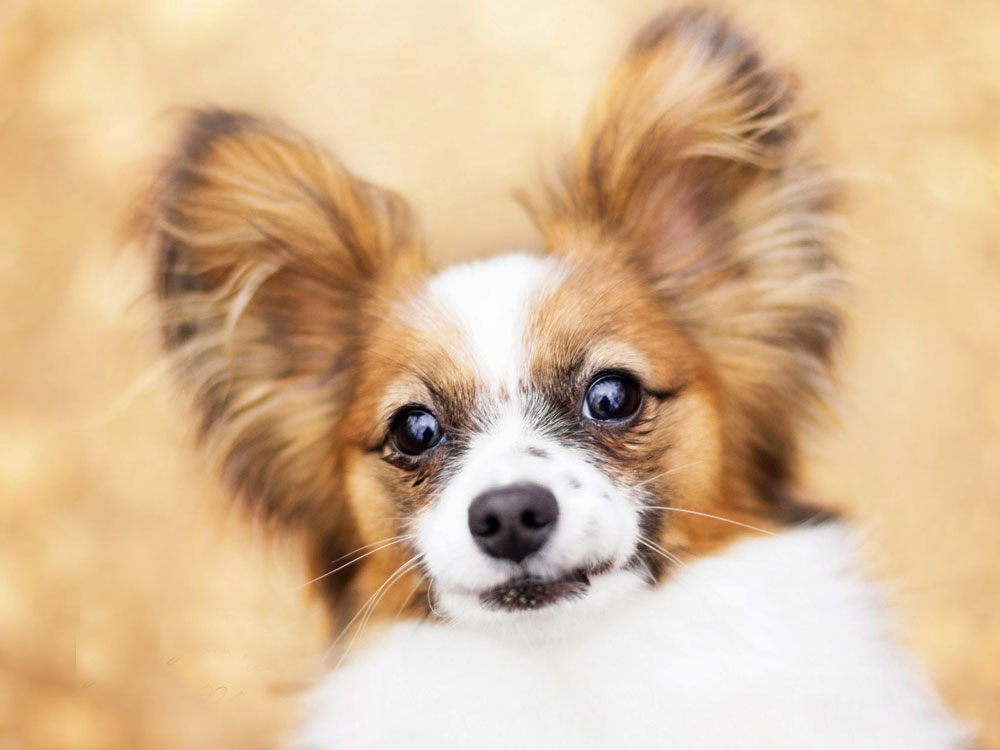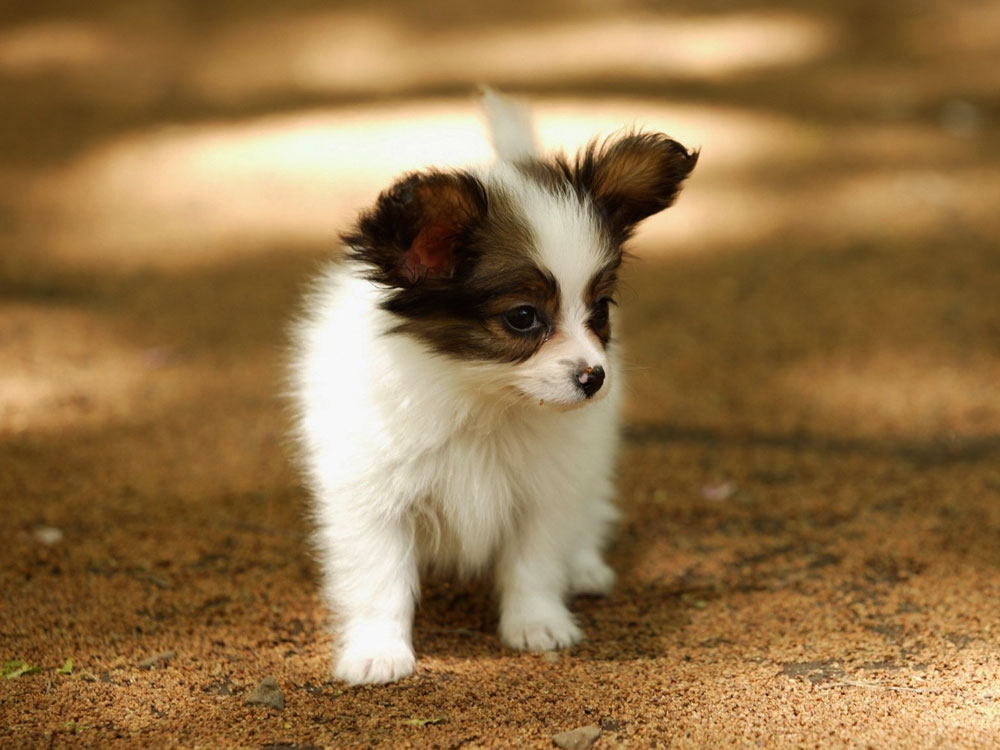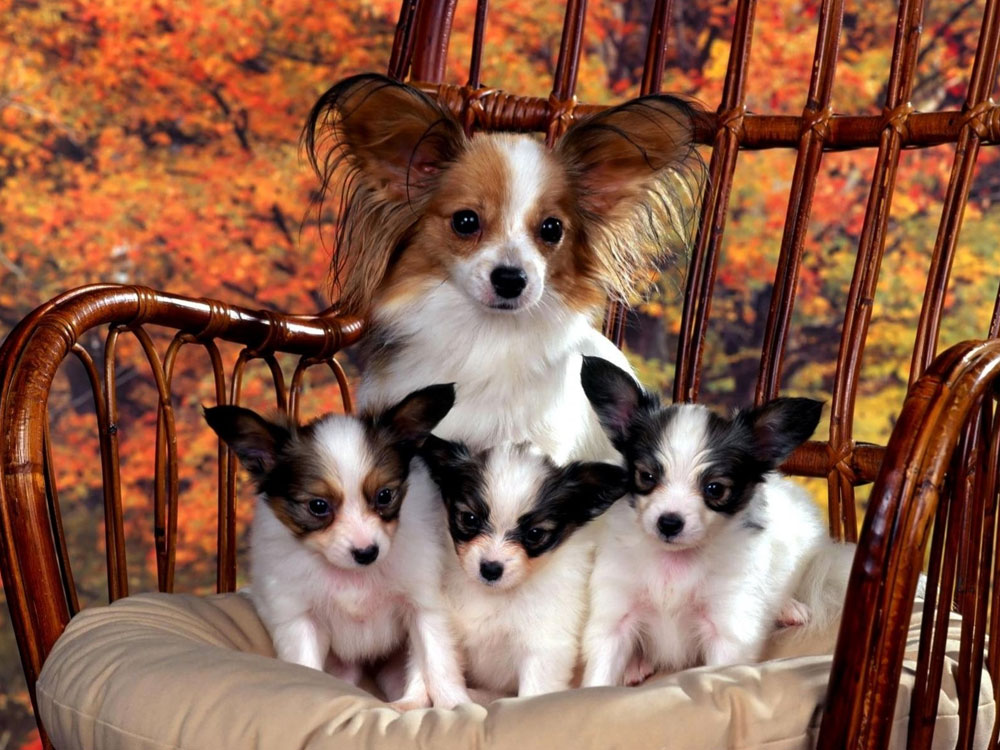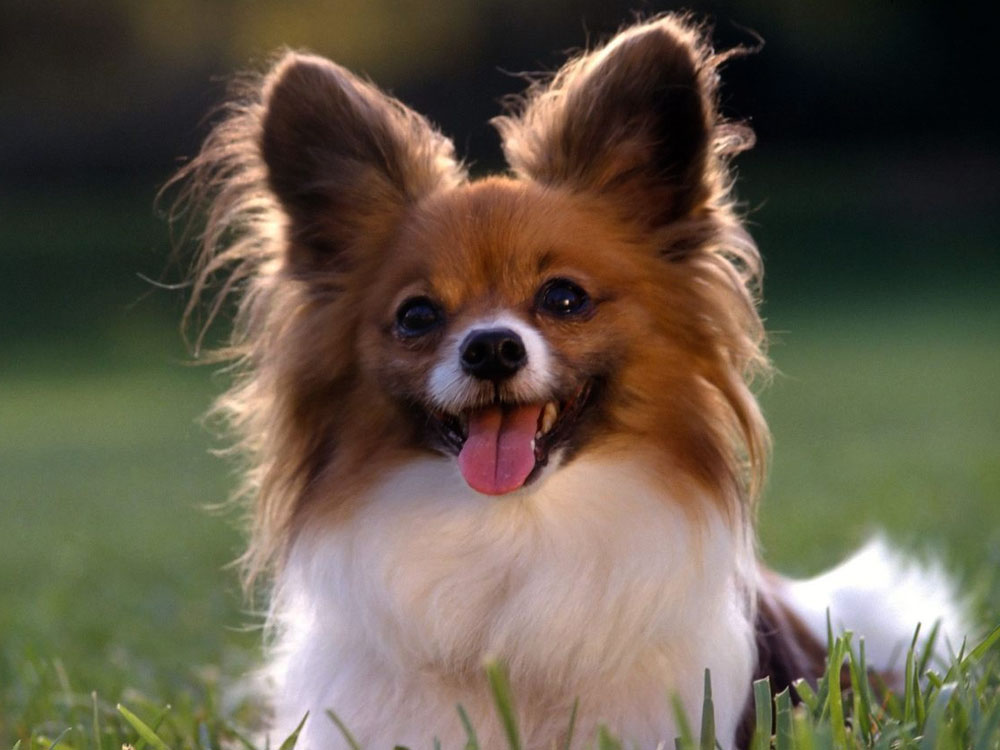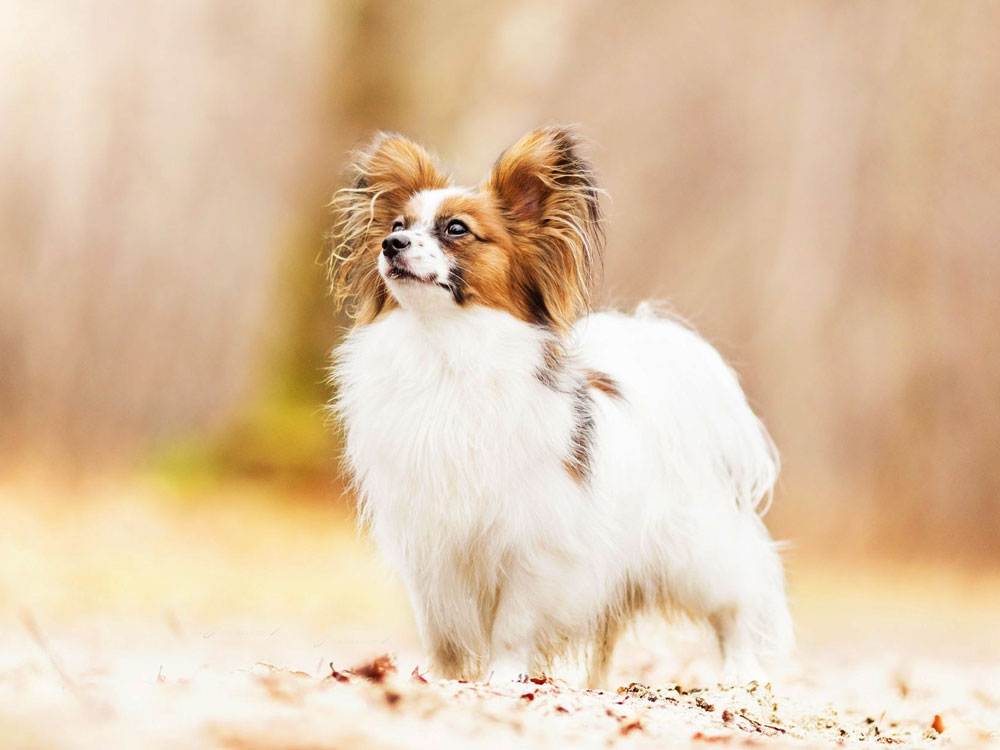
Papillon Breed Pictures
Vital Breed Stats
| Height: | 20 - 28 cm M | 20 - 28 cm F |
| Weight: | 4 - 5 kg M | 3 - 4 kg F |
| Breed Group: | Pastoral Dog Group |
| Life Expectancy: | 13 - 15 years |
| KC Registered: | No |
Breed Characteristics
| Size: |  |
| Grooming: |  |
| Exercise Level: |  |
| Barking Level: |  |
| Good with Children: |  |
| Good with other pets: |  |
| Affectionate: |  |
| Protective: |  |
| Cost to Keep: |  |
Give a thumbs up if you love the Papillon

0
More About the Breed
History
The Papillon dates back 700 years ago, but its history is somewhat a mystery with France, England and Belgium claiming its origins. The earliest records of the Papillon can be traced through 1500 artworks depicting a toy spaniel that resembles the Papillon found in Italy. However, Papillons are also shown in paintings of royal families around Europe such as the family portrait of Louis XIV.
The early versions of the Papillon then called the Phalene, the French word for moth has drooping ears. It was only in the 19th century that the pricked ears became fashionable, resembling that of a butterfly, hence it was called Papillon, the French word for butterfly. Some believed that the Phalene was crossed with miniature spitz-type dogs to achieve the pricked ear variety, which is the Papillon.
The Papillon was bred to be an excellent ratter due to its small size. Today, this toy dog breed became a favourite show ring and canine sports contender, at the same time excellent family companion due to its affectionate and loyal natures. The Papillon was recognised byThe Kennel Club in 1923.
Appearance
The defining feature of the Papillon is its butterfly (pricked) ears. The breed is identical to its sibling breed Phalene in all respects, except for the drop ears. In fact, the breed description here is suitable for both varieties of breeds. The Papillon is a toy dog breed, petite and delicate, weighing 4 to 9 pounds. It stands 20 to 28 centimetres and is longer than it is tall. Papillons should maintain its lightweight, fine-boned appearance that translates to its graceful, free and quick gait, with its ears spread out like butterfly wings. Its tail is arched over the back and ends in a large, full curl.
The Papillon sports a dense single coat that lies on its back and the sides but with an abundant frill on the chest. There is also a short hair present on the muzzle and skull. The coat is long and very silky to the touch. Papillons are parti-coloured with white as its base. The head, ears and around the eyes are always coloured save for white.
Grooming
The Papillon is usually a clean dog but will still require daily brushing of its long and silky coat. Since this dog breed does not have a doggie odour, bathing can be done when necessary using dry shampoo.
Other dog grooming aspects include brushing of the Papillon's teeth at least twice a week, especially since small dogs tend to develop gum disease and bad breath. Keep the nails trimmed to avoid unnecessary overgrowth that can lead to painful splitting or cracking. Ears should be cleaned regularly as well to prevent excess wax build-up that may become infected.
Temperament
Papillons are eager to please, so they are a suitable choice for first-time owners. Because they are people-pleasing and intelligent dogs, training is really easy, but they still need to understand their place in the "pack" with you, the owner as the alpha figure. Nevertheless, the Papillon is known to be among the most obedient and responsive toy dogs.
Supervision is required when it comes to interaction with both the children and the Papillon. Although it is a gentle and playful dog, they can easily get hurt during rough play with boisterous or overly active children. It is also friendly with other dogs especially when socialised from a young age. However, it may not get on well with small pets such as mice, guinea pigs, even cats. Papillons were once bred as ratters, so chasing small animals are instinctively wired to their personality.
Intelligence
Nutrition
- Senior and less active: up to 267 calories daily
- Typical adults: up to 300 calories daily
- Physically active/working dogs: up to 334 calories daily
Feeding
Health
Exercise
Cost of Ownership
Cost is often the last thing people think about when buying a dog – which is a mistake. It is essential to know if you can afford to raise it for the rest of its lifespan if you want to become a responsible dog owner. Be ready to pay anything from £500 to £700 if you plan to buy a Papillon puppy. Then you should also start to consider getting a pet insurance to protect both you and the dog. There are affordable pet insurance premiums available, which may cost around £22 to £44 a month.
Whether you buy commercial dog food or prepare a home-cooked meal, feeding a Papillon may likely cost you about £20 to £30 a month. On top of this are regular veterinary care costs, which include initial vaccinations, boosters and spaying/sterilisation. Veterinary care can quickly add up to at least £600 a year. Overall, you may have to spend anywhere from £50 to £80 a month when you buy a Papillon dog.
Is a Papillon Right for You?
- The Papillon is one of the oldest toy spaniels.
- It is a highly active dog that excels in agility and obedience trials.
- The Papillon is usually a clean dog but will still require daily brushing.
- Highly confident and calm, Papillons are outgoing dog
- It is an excellent watchdog but a poor guard dog because of its small size.
- Papillons are eager to please, easy to train and are suitable for novice owners.






